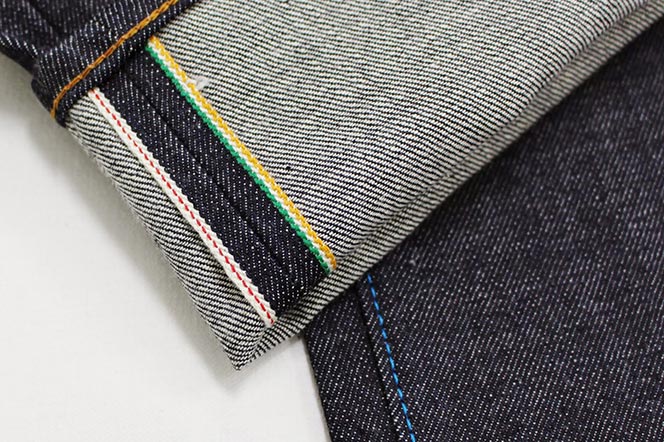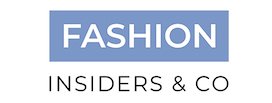Did you know that it takes 10,000 litres of water to make one pair of jeans? Please don’t let that put you off working with denim fabric. It’s one of the most distinctive, hard-wearing and versatile fabrics available for use in the fashion industry. It can be fashioned into clothing, accessories and footwear. Its cotton base threads can be combined with wool to add warmth, or with silk to add sheen. It absorbs dye fantastically and fades over time to add a distinctive vintage patina.
Denim fabric, as we know it today, was made famous by two Americans: Jacob W. Davis, a tailor from Nevada, and Levi Strauss, a denim manufacturer. They used it in the mid 19th century to produce their famous jeans. However, it is thought that the name “denim” is derived from serge de Nîmes, meaning “serge from Nîmes,” after weavers in Nîmes, Frances attempted to replicate a fabric originally developed in Gênes (the French word for jeans), but ended up with a different cotton twill, which is what we now know as denim.
Denim fabric is a strong cotton warp-faced textile in which the weft threads pass under two or more of the warp threads. This produces a woven twill that creates a diagonal rib effect. Indigo denim, with its dyed warp thread and undyed white weft thread, is the most commonly known. As a result of the warp-faced twill weaving, the upper side of the cloth has dark blue warp threads and the underside features white weft threads. The dyeing process creates denim’s signature fading characteristics.
Denim can be a very versatile fabric to use. It can be fashioned into stretch denim jeans, dresses, jackets and coats. Depending on the blend, it can be adapted by combining the right and wrong sides of the cloth to create piping effects and two-tone panels.
If you’re contemplating working with denim fabric, there are a number of things to consider. Perplexing issues such as deciding whether to produce your products in-house or use a specialist manufacturer or determining what type of wash to use and the techniques required to accomplish it, are just some of the things you need to think about.
WORKING WITH DENIM FABRIC
Types of Denim
Denim is available in many different iterations and is extremely versatile. From lightweight chambrays that are suitable for shirting, to heavier denim such as 12-16oz weight for jeans. In its original cotton composition, it’s more suitable for summer and early autumn collections. However, with the addition of twill or wool herringbone, as the London Cloth Company is producing in East London, your denim could be fashioned into a coat or jacket for winter collections.
The various types of denim fabric include:
Raw or dry denim, which remains unwashed after being dyed. Characteristically, it is dark, stiff and very durable and over time it will fade. All denim is raw or dry until it is washed.
Selvedge denim is authentically woven on old looms using old-fashioned denim-weaving techniques. The selvedged edges are usually stitched with coloured thread: green, white, brown, yellow, or the most common, red. The cloth is narrow at 32” compared to non-selvedge denim which stands at 62”, and this allows the selvedge to form the outer seams of jeans.
Selvedge denim was popular until the 1900s. After this period, as denim popularity grew, it was produced on faster, more modern machinery. Today selvedge denim is more popular than non-selvedge due to its distinctive slightly irregular look and tighter, denser weave. It is produced, extensively, in Japanese mills.

Stretch denim has the addition of up to 3% Lycra added to the cotton. It is used to create more fitted styles, predominantly for womenswear. All weights of denim fabric can have Lycra added to the cotton base, allowing for the creation of fitted dresses, tops, tailored jackets and very fitted jeans.
Poly denim could be called smart denim, as it is dressier. The addition of polyester fibres means that the cloth will not crease as much as its 100% cotton counterpart. It is lightweight and very easy to wash and dry.
Coloured denim refers to sulphur-dyed denim, which produces a wide selection of speciality colours such as black, red, purple and green, among others.
Denim Washes
After your denim garments are designed and made it’s possible to achieve different effects on the finished products. To achieve them, various types of chemicals are used alongside sprinkler guns and machines.
Stone washing was the first type of ‘special effect’ used on raw denim. This is a process that removes much of the colour from raw denim, and adds contrast. Pumice stones are used to imbue a worn, rough look. The washing time dictates the final colour of the fabric; the longer it’s washed the lighter it becomes. The denim is then rinsed, softened and tumble-dried.
Sandblasting is a laundry process that is performed before washing. Denim products are shot with guns that contain sand in order to add abrasions and to create a worn appearance. Originally done by hand, large laundry houses now use automated systems.
Enzyme washing is considered to be a more efficient and environmentally sound alternative to stone washing. Organic enzymes that eat away at the indigo are used instead of pumice stones. Denim products that are finished this way tend to be stronger than those subjected to traditional methods of stone washing.
Related reading: How Denim Manufacturing Impacts the Environment
Acid washing originated in Italy in the 1980s. This process is achieved by soaking pumice stones in acid, then washing the denim with the stones. When the stones make contact with the denim, irregular pattern formations are created on the surface.
Sewing Denim Fabric
Denim products are usually made by using an overlocker sewing machine and an industrial 2-needle, flat-bed machine. Large factories may use specialist sewing machines, but usually, if producing moderately sized quantities, ordinary machines would be perfectly adequate to achieve the double rows of stitching that distinguishes denim items from regular clothing.
If you’re after the traditional flat-felled seam used on denim clothes and will be manufacturing small quantities, then you can purchase a specialist felling foot that can be attached to your machine for in-house production purposes.
The production of denim clothing is undertaken around the world. Some of the larger denim manufacturing hubs are Portugal, China, Turkey, North America and India.
If you are serious about working with denim fabric, then working with a factory that specialises in producing denim clothing is a must. But, a word of warning to most new designers and small brands: be prepared for disappointment as you probably won’t be able to meet their vast minimums. In order to justify the finishing processes such as stone washing, sandblasting or acid washing, huge quantities of product need to be made by the factory. The machines that are used for finishing are very large and must be filled. Usually, minimums range from 300- 500 pairs upwards per style per colour/finish.
When Vetements decided to produce a range of denimwear recently, they realised that they would be unable to meet the minimums of any of the factories they approached. They overcame this initial hitch by thinking creatively, as most good designers do. They bought vintage Levis and reworked them into stylish, patchwork jeans that became a cult favourite.
You too can think like Vetements and find a new way to create your own denim line. Visit fabric trade fairs, such as Premiere Vision in Paris, and source specialist denim producers. With advances in fabric production, you will undoubtedly find some great denim which doesn’t require special finishing using large machines.
When working with denim fabric, consider working with a factory that is open to producing your goods creatively. Some designers, when working with a small factory, take the initiative and supply them with specialist sewing machines or tools that they don’t have, thus enabling the smooth manufacturing of their products.
Designers often desire the use of denim in their fashion collections. It is a material loved and worn by a large portion of the world’s population in one way or another. It allows for products to be entry point as well as high end. In short, it is a very democratic material. Not to mention that the contrast of the two rows of mustard top-stitching thread, against a backdrop of indigo denim, is nothing short of sublime.
Don’t worry too much if you’re unable to meet the minimums for the special finishes, just stick to dark blue and produce your goods locally, with the aid of a creative machinist and a felling foot. Dark denim has great hanger appeal and with the right cuts, will also have great selling appeal. Should you want to offer an alternative finish, why not try experimenting with bleach, paint or dye? Restriction is the ally of all creative endeavours, after all.




